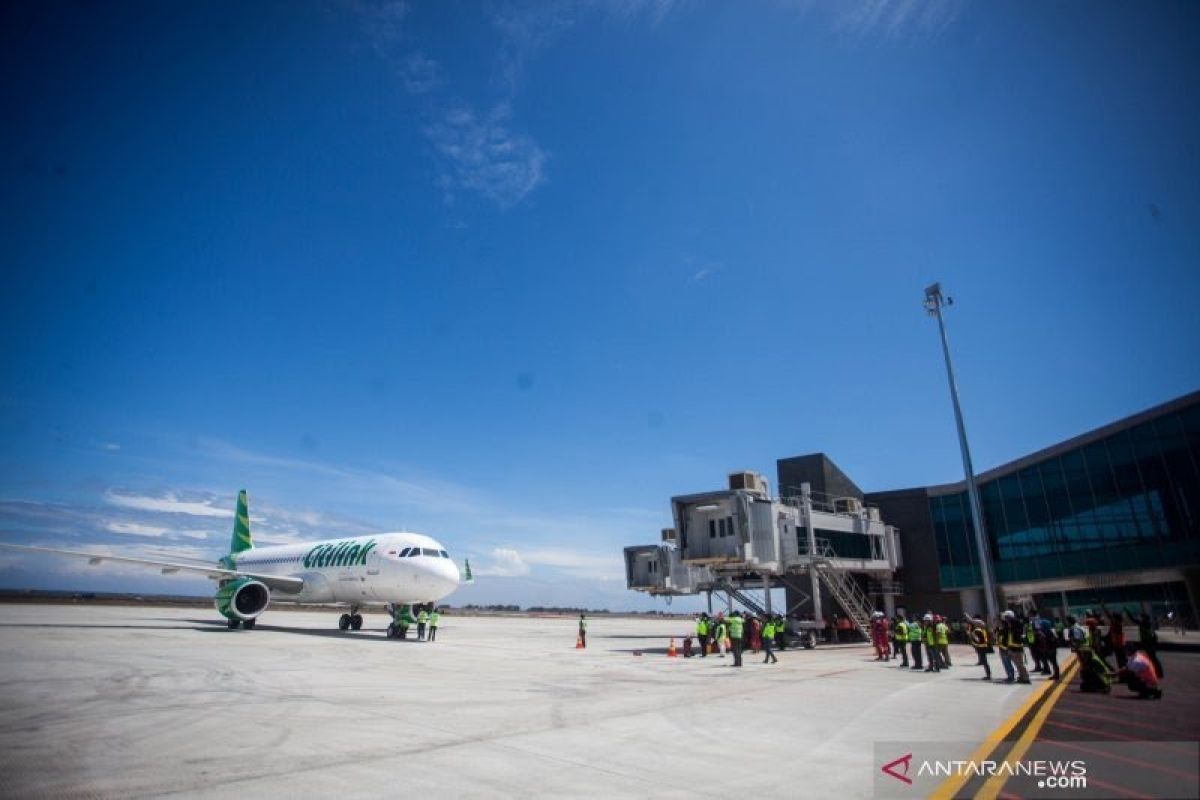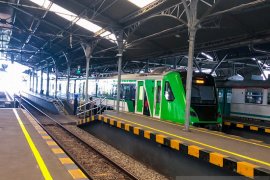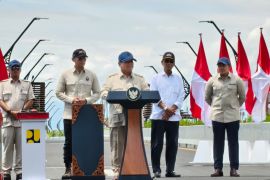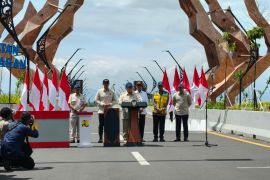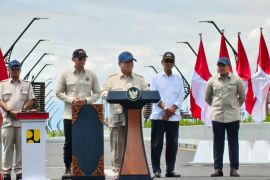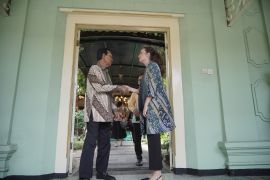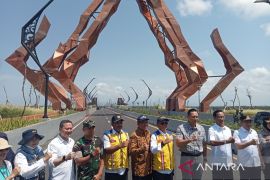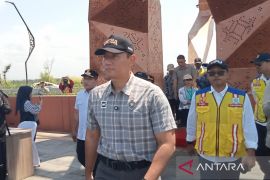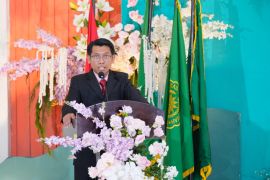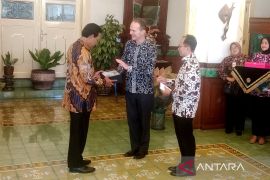While inaugurating the new airport on Aug 28, 2020, President Joko Widodo (Jokowi) claimed that the construction of YIA, which took just 20 months and cost Rp11.3 trillion (some US$777.4 million), is the best construction practice, so far, in Indonesia.
The new airport has a 3,250-meter runway, longer than the old Adisucipto Airport's runway measuring 2,200 meters. Wide-bodied aircraft, such as Airbus A330 and Boeing 777, can land at the new airport. It has a 219 thousand square-meter terminal, compared to 17 thousand square meters at the old airport's terminal. It has a capacity to accommodate 20 million passengers yearly, as compared to 1.6 million yearly at the old airport.
Jokowi is upbeat about the YAI being crowded once the COVID-19 pandemic is brought under control.
"We know that we are still facing the COVID-19 pandemic. However, once we have the vaccination, Insya Allah (God willing), I believe that the airport can become the busiest. That is important," he affirmed.
Located in Kulon Progo District, Yogyakarta Province, the new airport is some 60 kilometers away from the world’s most popular Buddhist temple, Borobudur, designated by the Indonesian government as one of Indonesia's five super-priority tourist destinations.
Minister of Transportation Budi Karya Sumadi is optimistic that the YAI would attract domestic and foreign tourists, thereby helping aid economic recovery amid the COVID-19 pandemic.
The minister highlighted the need to improve the means of transportation connecting YIA and Borobudur Temple by being heedful to and prioritizing health protocols to prevent COVID-19 transmission.
The government has made provisions to operate Damri shuttle buses, SetelQu, airport taxis, online taxis, and trains via Wojo station, at a proximity of 10 minutes from the airport, to connect the airport with Borobudur. In future, the train line will directly enter the airport area, he stated.
"With this intermodal connectivity, we hope to restore the national economy by attracting more tourists to Yogyakarta. We are optimistic that in future, the Yogyakarta International Airport will be able to have a positive impact on the national economy as well as improve the welfare of the community, especially in the surrounding Yogyakarta region and Indonesia, in general," Sumadi stated.
He lauded state-owned airport operator PT Angkasa Pura I for providing a tenant area measuring 1,500 square meters at the YIA terminal, which can accommodate 300 micro, small, and medium-scale enterprises (MSMEs), and an area of 880 square meters in the Liaison Building to accommodate 170 MSMEs. The tenant area is named Kotagede Market. Kotagede is an historical area in Yogyakarta that is famous for traditional silver craft.
The Yogyakarta International Airport currently serves 20 domestic routes and two international routes, Singapore and Kuala Lumpur, and has huge potential to add domestic routes covering Manado, Kupang, and Labuan Bajo -- and international routes, such as Jeddah, Medina, Sydney, Melbourne, Hong Kong, and Bangkok, the minister stated.
For flight navigation services, the airport has an ATC tower building, administration building, and operational building, built on an area of 15,651 square meters, with an investment of Rp87.1 billion.
The eight-floor ATC tower building is 39.5 meters tall and is equipped with facilities, such as a tower set, radar monitoring, VHF radio, direct speech telephone, and ATIS.
The airport has been structurally designed to withstand earthquakes, tsunamis, liquefaction, volcanic ash eruptions, and floods, making it the first airport to have integrated earthquake and tsunami mitigation device. Its design has involved a panel of experts from Japan and an Academic Expert Team from the University of Gadjah Mada (UGM), the Bandung Institute of Technology (ITB), the Surabaya Institute of Technology (ITS), and the University of Diponegoro (UNDIP). The airport is also equipped with a Crisis Center building.
Parts of the airport feature local traditional art works and local wisdoms, represented by the Jasmine flower and Wijayakusuma (Epiphyllum oxypetalum), designed by 46 local artists from Yogyakarta.
In fact, Yogyakarta Governor, Sri Sultan Hamengkubowono X, who was behind the traditional architectural design of YAI.
"He (the Sultan) is very detailed in his approach, and he is an expert in the field of architecture. All these interior designs reflect his expertise," Jokowi lauded.
Meanwhile, despite the COVID-19 pandemic, YAI had served a total of 3,355,660 passengers and 4,193 flights during the March 29-August 24 period.
The airport served as many as 2,185 departing flights, with a total of 325,577 passengers, and 20,336 arriving flights and 3,030,083 passengers since the airport became fully operational on March 29, President Director of PT Angkasa Pura I Faik Fahmi stated
"Despite the COVID-19 pandemic, the number of passengers at the Yogyakarta International Airport is quite high, reaching 94,130 in August. The highest number of arriving passengers at the Yogyakarta International Airport was in April 2020, notably 780,751," Fahmi noted.
Airlines serving domestic flights at the airport comprised Garuda Indonesia, Citilink, Lion Air, Batik Air, Air Asia Indonesia, and Sriwijaya Air, while international flights to Singapore and Kuala Lumpur were served by SilkAir and AirAsia.
The Yogyakarta International Airport (YIA) can accommodate large-bodied aircraft of Boeing 777 and Airbus, thereby circumventing the need to transit at the Sukarno-Hatta Airport or Denpasar, Bali.
The presence of YIA has significantly boosted economic growth in Kulon Progo, from 5.2 percent in 2018 to 10.48 percent in June 2019, after the airport opened for the first time on May 6, 2019.
Since YIA is located at a very strategic position, in the middle of Java Island, he also believes that it would boost tourist arrivals. Borobobudur Temple and Prambanan Temple are not the only tourist attractions located near the airport.
Yogyakarta itself is the center of the Javanese kingdom cultural heritage, offering various tourists spots such as the Sultan’s palace, Taman Sari garden chateau with elaborate series of old swimming pools, Kalibiru national park, unique culinary and arts.
The new international airport is ready to indulge tourists and offers them world-class airport services by prioritizing the aspects of comfort, security, and safety for all airport service users.
Related news: New Yogyakarta airport aimed to help boost tourism: Minister Sumadi
Related news: New Yogyakarta Airport served 4,193 flights during March-Aug period
Close
EDITED BY INE
Editor: Suharto
Copyright © ANTARA 2020
